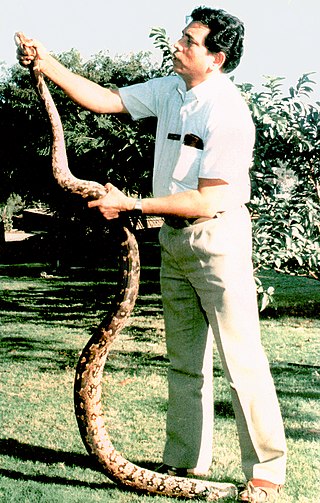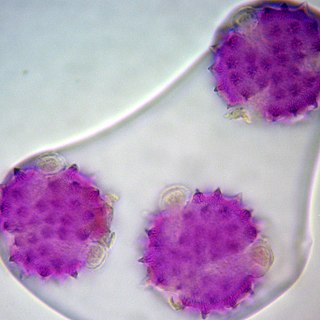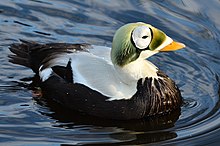
Forensic science, also known as criminalistics, is the application of science principles and methods to support legal decision-making in matters of criminal and civil law.

Poaching is the illegal hunting or capturing of wild animals, usually associated with land use rights. Poaching was once performed by impoverished peasants for subsistence purposes and to supplement meager diets. It was set against the hunting privileges of nobility and territorial rulers.

Forensic palynology is a subdiscipline of palynology, that aims to prove or disprove a relationship among objects, people, and places that may pertain to both criminal and civil cases. Pollen can reveal where a person or object has been, because regions of the world, countries, and even different parts of a single garden will have a distinctive pollen assemblage. Pollen evidence can also reveal the season in which a particular object picked up the pollen. Recent research into forensic palynology has seen advancements in DNA barcoding from pollen, to the level of singular pollen molecules, allowing DNA profiles to be created from singular palynomorphs, streamlining the efficiency and accuracy of taxonomic identification.

Forensic dentistry or forensic odontology involves the handling, examination, and evaluation of dental evidence in a criminal justice context. Forensic dentistry is used in both criminal and civil law. Forensic dentists assist investigative agencies in identifying human remains, particularly in cases when identifying information is otherwise scarce or nonexistent—for instance, identifying burn victims by consulting the victim's dental records. Forensic dentists may also be asked to assist in determining the age, race, occupation, previous dental history, and socioeconomic status of unidentified human beings.

The Tibetan antelope or chiru is a medium-sized bovid native to the northeastern Tibetan plateau. Most of the population live within the Chinese border, while some scatter across India and Bhutan in the high altitude plains, hill plateau and montane valley. Fewer than 150,000 mature individuals are left in the wild, but the population is currently thought to be increasing. In 1980s and 1990s, they had become endangered due to massive illegal poaching. They are hunted for their extremely soft, light and warm underfur which is usually obtained after death. This underfur, known as shahtoosh, is used to weave luxury shawls. Shahtoosh shawls were traditionally given as wedding gifts in India and it takes the underfur of three to five adult antelopes to make one shawl. Despite strict controls on trade of shahtoosh products and CITES listing, there is still demand for these luxury items. Within India, shawls are worth $1,000–$5,000; internationally the price can reach as high as $20,000. In 1997 the Chinese government established the Hoh Xil National Nature Reserve solely to protect the Tibetan antelope population.

Conservation genetics is an interdisciplinary subfield of population genetics that aims to understand the dynamics of genes in a population for the purpose of natural resource management, conservation of genetic diversity, and the prevention of species extinction. Scientists involved in conservation genetics come from a variety of fields including population genetics, research in natural resource management, molecular ecology, molecular biology, evolutionary biology, and systematics. The genetic diversity within species is one of the three fundamental components of biodiversity, so it is an important consideration in the wider field of conservation biology.

Wildlife conservation refers to the practice of protecting wild species and their habitats in order to maintain healthy wildlife species or populations and to restore, protect or enhance natural ecosystems. Major threats to wildlife include habitat destruction, degradation, fragmentation, overexploitation, poaching, pollution, climate change, and the illegal wildlife trade. The IUCN estimates that 42,100 species of the ones assessed are at risk for extinction. Expanding to all existing species, a 2019 UN report on biodiversity put this estimate even higher at a million species. It is also being acknowledged that an increasing number of ecosystems on Earth containing endangered species are disappearing. To address these issues, there have been both national and international governmental efforts to preserve Earth's wildlife. Prominent conservation agreements include the 1973 Convention on International Trade in Endangered Species of Wild Fauna and Flora (CITES) and the 1992 Convention on Biological Diversity (CBD). There are also numerous nongovernmental organizations (NGO's) dedicated to conservation such as the Nature Conservancy, World Wildlife Fund, the Wild Animal Health Fund and Conservation International.
Forensic identification is the application of forensic science, or "forensics", and technology to identify specific objects from the trace evidence they leave, often at a crime scene or the scene of an accident. Forensic means "for the courts".

Forensic biology is the application of biological principles and techniques in the investigation of criminal and civil cases.

Wildlife trade refers to the products that are derived from non-domesticated animals or plants usually extracted from their natural environment or raised under controlled conditions. It can involve the trade of living or dead individuals, tissues such as skins, bones or meat, or other products. Legal wildlife trade is regulated by the United Nations' Convention on International Trade in Endangered Species of Wild Fauna and Flora (CITES), which currently has 184 member countries called Parties. Illegal wildlife trade is widespread and constitutes one of the major illegal economic activities, comparable to the traffic of drugs and weapons.

The Chinese pangolin is a pangolin native to the northern Indian subcontinent, northern parts of Southeast Asia and southern China. It has been listed as Critically Endangered on the IUCN Red List since 2014, as the wild population is estimated to have declined by more than 80% in three pangolin generations, equal to 21 years. It is threatened by poaching for the illegal wildlife trade.

Body identification is a subfield of forensic science that uses a variety of scientific and non-scientific methods to identify a body. Forensic purposes are served by rigorous scientific forensic identification techniques, but these are generally preceded by formal identification. This involves requesting a family member or friend of the victim to visually identify the body.

Wildlife smuggling or wildlife trafficking concerns the illegal gathering and trade of endangered species and protected wildlife, including plants and byproducts or products utilizing a species. Research on wildlife smuggling has increased, however, knowledge of the illicit trade remains limited. The differences between international policies and tendencies likely contribute to the extensive estimated range of wildlife smuggling, anywhere from $5-$23 billion, with an additional $67-$193 billion when timber and fish are included. The prolific growth of wildlife smuggling makes it the fourth-largest criminal enterprise globally after drug, firearm, and human trafficking. Products demanded by the trade include but are not limited to ivory, bushmeat, traditional medicine, and exotic pets. China and the United States are the largest buyers in the illegal wildlife trade. It often involves other illegal activities such as tranquilizing animals without proper authorization.

DNA barcoding is a method of species identification using a short section of DNA from a specific gene or genes. The premise of DNA barcoding is that by comparison with a reference library of such DNA sections, an individual sequence can be used to uniquely identify an organism to species, just as a supermarket scanner uses the familiar black stripes of the UPC barcode to identify an item in its stock against its reference database. These "barcodes" are sometimes used in an effort to identify unknown species or parts of an organism, simply to catalog as many taxa as possible, or to compare with traditional taxonomy in an effort to determine species boundaries.

The international trade in parrots is a lucrative enterprise, and forms an important part of the international wildlife trade. As parrots have become increasingly endangered, many countries have placed restrictions on the trade and/or prohibited the trade altogether. Despite the restriction on trade in many countries however, the market still operates both legally and illegally. A big factor that attempts to keep the control in international trade is CITES. The Convention of International Trade in Endangered Species of Wildlife Fauna and Flora was established in 1975, and consists of 184 parties which includes 183 countries along with the European Union. CITES offers three different degrees of protection for around 38,000 species around the world.

Sunil Kumar Verma, was an Indian biologist and a principal scientist at the Centre for Cellular and Molecular Biology, Hyderabad, India. Verma was primarily known for his contributions to the development of "universal primer technology", a first generation DNA barcoding method, that can identify any bird, fish, reptile or mammal from a small biological sample, and satisfy legal evidence requirements in a court of law. This technology has revitalised the field of wildlife forensics and is now routinely used across India to provide a species identification service in cases of wildlife crime. This approach of species identification is now known as "DNA barcoding" across the world.

Lalji Singh FNA, FASc was an Indian scientist who worked in the field of DNA fingerprinting technology in India, where he was popularly known as the "Father of Indian DNA fingerprinting". Singh also worked in the areas of molecular basis of sex determination, wildlife conservation forensics and evolution and migration of humans. In 2004, he received the Padma Shri in recognition of his contribution to Indian science and technology.

Pollen DNA barcoding is the process of identifying pollen donor plant species through the amplification and sequencing of specific, conserved regions of plant DNA. Being able to accurately identify pollen has a wide range of applications though it has been difficult in the past due to the limitations of microscopic identification of pollen.

DNA barcoding methods for fish are used to identify groups of fish based on DNA sequences within selected regions of a genome. These methods can be used to study fish, as genetic material, in the form of environmental DNA (eDNA) or cells, is freely diffused in the water. This allows researchers to identify which species are present in a body of water by collecting a water sample, extracting DNA from the sample and isolating DNA sequences that are specific for the species of interest. Barcoding methods can also be used for biomonitoring and food safety validation, animal diet assessment, assessment of food webs and species distribution, and for detection of invasive species.

DNA barcoding in diet assessment is the use of DNA barcoding to analyse the diet of organisms. and further detect and describe their trophic interactions. This approach is based on the identification of consumed species by characterization of DNA present in dietary samples, e.g. individual food remains, regurgitates, gut and fecal samples, homogenized body of the host organism, target of the diet study.





















